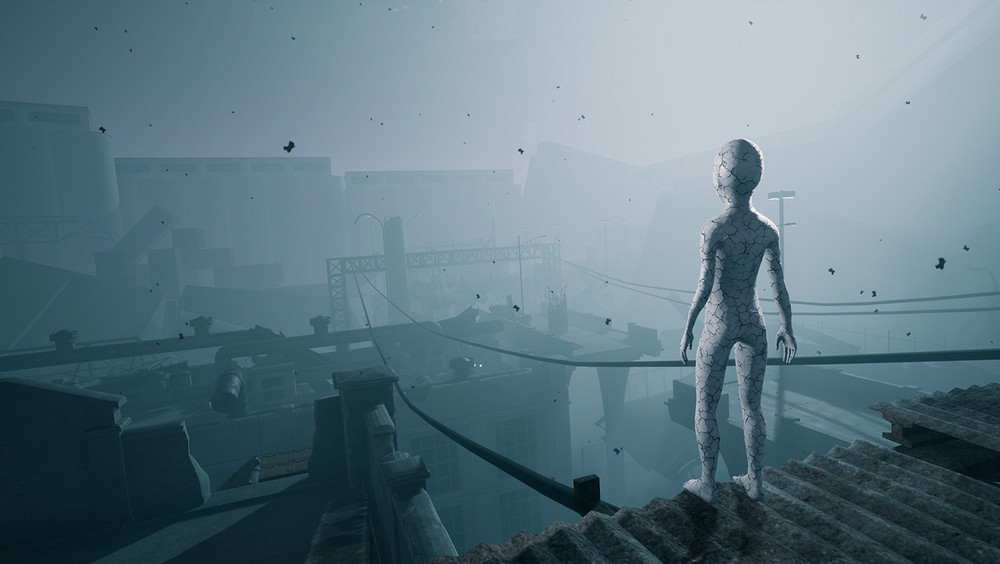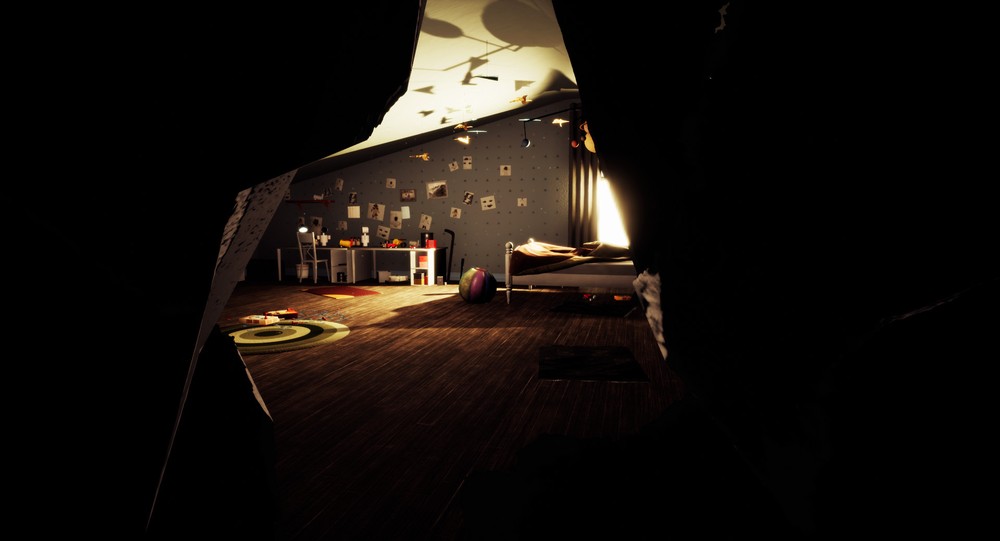I’m not sure that I fully understand what The Inner Friend is about, but I feel like that is partly the point. This is the kind of game that is open to interpretation, that doesn’t seek to pin down its themes, and certainly doesn’t bash the player over the head with clichés, tropes and exposition. Developed by Montreal-based Playmind, The Inner Friend puts you in control of a porcelain-like figure and tasks you with exploring a variety of environments, all loosely based around childhood fears and worries. It’s part horror, part walking simulator and part platformer, and it’s full of mystery.
When starting The Inner Friend, I was immediately reminded of a game that I played on the PlayStation 3 titled Papo & Yo. Similarly to The Inner Friend, Papo & Yo presented a surface level experience that showed off one thing, but it was clear that there were darker secrets hiding just below the surface. The Inner Friend dives into this darkness a little quicker than Papo & Yo did, but it never truly reveals its hand, and even as the end credits roll you will be left with questions about what it all means and what certain sequences in the game were intended to portray. This feels entirely intentional, though, and it’s not as if the developer failed to deliver the message that they were intending, more that the feelings that the game is trying to provoke are more subjective than traditional storytelling allows for.
 In terms of the gameplay itself, The Inner Friend takes you through a variety of locations that take up a large part of a child’s life, and often loom larger in a child’s mind than they would do in reality. School corridors, shopping malls and art galleries are some of the earlier representations, and thinking back to my own childhood I can remember some of these feeling cavernous and full of endless numbers of people. When you mix in a few horror or fantastical elements that bring to mind the movies of Guillermo del Toro or 2001: A Space Odyssey, these locations can quickly take a turn, and with the intriguing visual design at play, some of the levels make it easy to see why they would be terrifying in the eyes of a child.
In terms of the gameplay itself, The Inner Friend takes you through a variety of locations that take up a large part of a child’s life, and often loom larger in a child’s mind than they would do in reality. School corridors, shopping malls and art galleries are some of the earlier representations, and thinking back to my own childhood I can remember some of these feeling cavernous and full of endless numbers of people. When you mix in a few horror or fantastical elements that bring to mind the movies of Guillermo del Toro or 2001: A Space Odyssey, these locations can quickly take a turn, and with the intriguing visual design at play, some of the levels make it easy to see why they would be terrifying in the eyes of a child.
Each level will give you a different mechanic to play with, such as solving puzzles, hiding, or running from a monster, and this helps to keep the experience feeling fresh and to keep you on your toes, as you’re never quite sure what you’re going to be dealing with. The Inner Friend is a fairly short experience overall, and I managed to make my way through it in about two to three hours. There are a number of collectibles in each level that promise an extra ending scene once gathered, and depending on how many you pick up during your first run through; these would likely add another hour or so to the experience.
 There are a series of puzzle sequences in The Inner Friend, some more obvious than others, though I don’t know if any of them can be described as particularly difficult. This is a game that’s designed to experienced, rather than struggled with, and navigating levels feels natural due to the well-placed lighting that subtly hints at where you need to go next. The one area that I did struggle with, though, was the character movement, which seems to fight against the player for a few seconds before finally giving in and going where you want. There are a couple of moments when you push the stick in a certain direction where the character decides to move forward in the direction that they’re facing, rather than turning, and this can make certain puzzles, particularly one platforming section and another where you’re required to jump to specific squares, far more frustrating than they needed to be, and I’d be lying if I said that the thought of putting my controller down and walking away didn’t come into my head once or twice.
There are a series of puzzle sequences in The Inner Friend, some more obvious than others, though I don’t know if any of them can be described as particularly difficult. This is a game that’s designed to experienced, rather than struggled with, and navigating levels feels natural due to the well-placed lighting that subtly hints at where you need to go next. The one area that I did struggle with, though, was the character movement, which seems to fight against the player for a few seconds before finally giving in and going where you want. There are a couple of moments when you push the stick in a certain direction where the character decides to move forward in the direction that they’re facing, rather than turning, and this can make certain puzzles, particularly one platforming section and another where you’re required to jump to specific squares, far more frustrating than they needed to be, and I’d be lying if I said that the thought of putting my controller down and walking away didn’t come into my head once or twice.
There’s another point that I wanted to make that isn’t as much a complaint as a curiosity, and that is that I can’t remember a game that has made my controller vibrate at such intensity or for so long a period as The Inner Friend does. It got to the point that my partner came into the room asking what the strange buzzing noise was, as she could hear it through the wall. It’s not as if the vibration was representative of what was happening on the screen, either, more like someone accidentally flipped the vibration setting to maximum and didn’t realize.
 Playing The Inner Friend is an experience that I’m glad that I’ve had, but I’m unsure if I could wholeheartedly recommend it to others to try. There’s enough of a thought experiment on show to make it intriguing, and you’ll definitely be thinking about things by the end of the game, but the controls are problematic enough to make me think twice about saying that it’s something you should play. There’s also the question of the game’s length, and while I feel as though making this game any longer would be unnecessary and feel like padding, there will undoubtedly be people that feel as if a two to three hour experience isn’t a worthwhile return on their investment. The Inner Friend is an interesting curiosity, but for a game about childhood fears, it’s a shame that the only thing that is truly horrific is the inability to get your character to run in a straight line.
Playing The Inner Friend is an experience that I’m glad that I’ve had, but I’m unsure if I could wholeheartedly recommend it to others to try. There’s enough of a thought experiment on show to make it intriguing, and you’ll definitely be thinking about things by the end of the game, but the controls are problematic enough to make me think twice about saying that it’s something you should play. There’s also the question of the game’s length, and while I feel as though making this game any longer would be unnecessary and feel like padding, there will undoubtedly be people that feel as if a two to three hour experience isn’t a worthwhile return on their investment. The Inner Friend is an interesting curiosity, but for a game about childhood fears, it’s a shame that the only thing that is truly horrific is the inability to get your character to run in a straight line.











